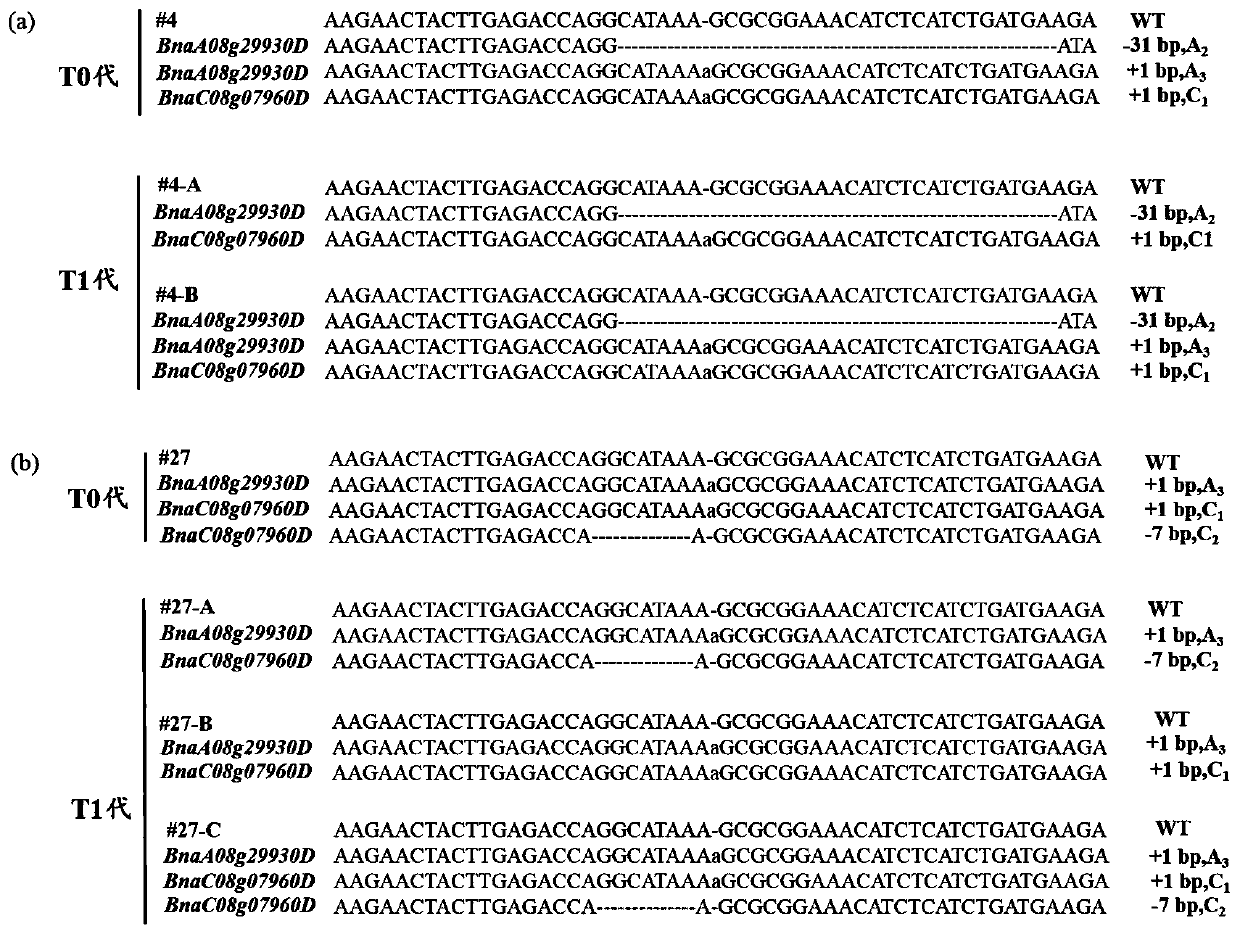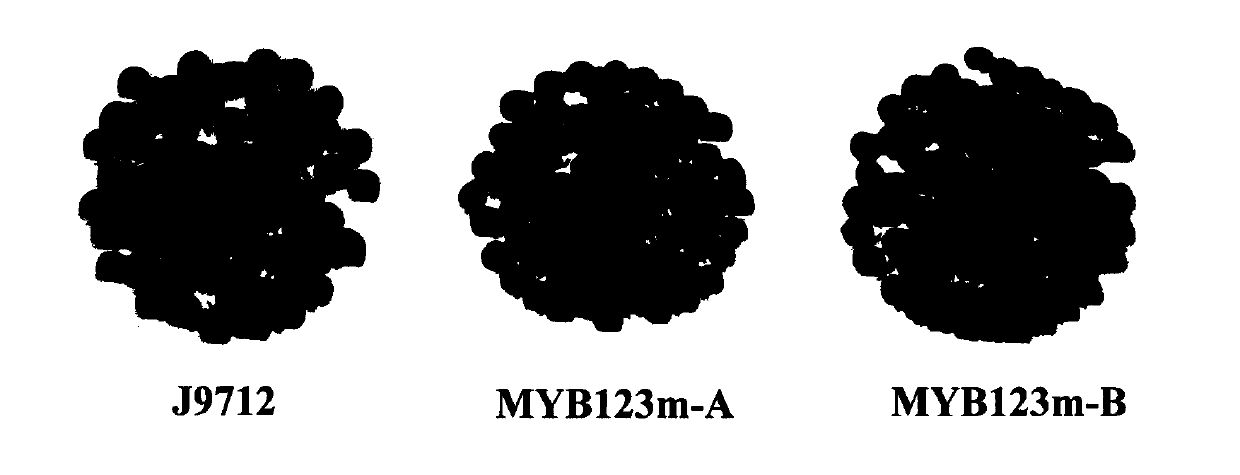Method for obtaining yellow seed germplasm of brassica napus based on CRISPR/Cas9 technology
A cabbage type rapeseed technology and technology, applied in the field of genetic engineering, can solve the problems of high labor intensity, prone to trait separation, long time required for breeding, etc., and achieve the effect of enriching knowledge and broad application prospects.
- Summary
- Abstract
- Description
- Claims
- Application Information
AI Technical Summary
Problems solved by technology
Method used
Image
Examples
Embodiment 1
[0034] A method for specifically knocking out the BnMYB123 gene of Brassica napus using the CRISPR-Cas9 system, the method includes the following steps:
[0035] (1) A target site was designed in the conserved region of the two copies of the BnMYB123 gene (BnaA.MYB123 and BnaC.MYB123). The sequence of the target site is shown in SEQ ID NO. 3, and the sgRNA is located at the second of the two copies of the BnMYB123 gene. On the second exon, such as Figure one Shown
[0036] (2) Design and synthesize a pair of single-stranded oligo DNA sequences according to the target site sequence, the sequences of which are shown in SEQ ID NO. 4 and SEQ ID NO. 5 respectively;
[0037] (3) Obtain the sgRNA expression cassette by cutting and joining method;
[0038] (4) Connect the sgRNA expression cassette to the CRISPR-Cas9 vector, and then transform E. coli Trans5α to obtain the plant expression vector BnMYB123-Cas9;
[0039] (5) The BnMYB123-Cas9 vector was transformed into the Brassica napus recep...
Embodiment 2
[0044] Design and synthesis of knockout target sites
[0045] 1. Principles of target site selection:
[0046] (1) The length of the target sequence is 20bp. The 3 bases downstream of the sequence are NGG;
[0047] (2) The high GC% of the target sequence can improve the efficiency of shooting, so the target should preferably contain 11-14 C / G;
[0048] (3) Use the target site sequence to perform blast analysis on the rape genome to avoid off-target.
[0049] 2. Via the online website CRISPR-P( http: / / cbi.hzau.edu.cn / cgi-bin / CRISPR ), a target site was designed in the conserved region of the two copies of BnMYB123 gene (the target site position is as figure 1 Shown), sgRNA is located on the second exon of two copies of BnMYB123 gene, as Figure one Shown.
Embodiment 3
[0051] Construction of knockout vector
[0052] The construction of knockout vector adopts the modified vector pYLCRISPR / Cas9-DH, and the vector construction method is as follows:
[0053] 1. First, synthesize the necessary primers according to the vector construction method as shown in Table 1.
[0054] Table 1 Primers necessary for vector construction
[0055]
[0056] 2. The formation of double-stranded target sequence
[0057] Dissolve the forward and reverse target sequence with TE solution into 100μM mother liquor; take 1μL each of the forward target sequence (SEQ IDNO.4) and reverse target sequence (SEQ ID NO.5) solution, add 98μl 0.5×TE solution and mix well , Prepared into a 1μM working solution; take 10μL of the above mixture into a PCR tube, place it in a PCR machine, heat at 90°C for 30sec, move to room temperature and cool to complete annealing to form a double-stranded target sequence.
[0058] 3. Restriction digestion and linking of gRNA expression cassette
[0059] (1) Th...
PUM
 Login to View More
Login to View More Abstract
Description
Claims
Application Information
 Login to View More
Login to View More - R&D
- Intellectual Property
- Life Sciences
- Materials
- Tech Scout
- Unparalleled Data Quality
- Higher Quality Content
- 60% Fewer Hallucinations
Browse by: Latest US Patents, China's latest patents, Technical Efficacy Thesaurus, Application Domain, Technology Topic, Popular Technical Reports.
© 2025 PatSnap. All rights reserved.Legal|Privacy policy|Modern Slavery Act Transparency Statement|Sitemap|About US| Contact US: help@patsnap.com



